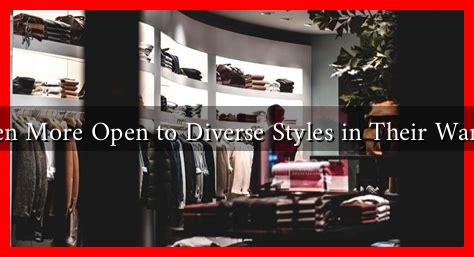-
Table of Contents
Are Men More Open to Diverse Styles in Their Wardrobes?
In recent years, the fashion landscape has undergone a significant transformation, with traditional gender norms being challenged and redefined. As society becomes more inclusive, the question arises: Are men more open to diverse styles in their wardrobes? This article explores the evolving attitudes towards men’s fashion, the influence of cultural shifts, and the implications for personal expression.
The Changing Landscape of Men’s Fashion
Historically, men’s fashion has been characterized by a limited palette of styles, often revolving around classic pieces such as suits, dress shirts, and casual wear. However, the past decade has seen a notable shift. Men are increasingly embracing a wider array of styles, colors, and patterns, reflecting a broader acceptance of individuality and self-expression.
Breaking Down Gender Norms
One of the primary drivers of this change is the breaking down of traditional gender norms. The rise of gender fluidity and non-binary identities has encouraged men to explore fashion beyond conventional boundaries. This shift is evident in various aspects:
- Streetwear Influence: The popularity of streetwear has introduced bold graphics, oversized silhouettes, and vibrant colors into men’s wardrobes.
- Celebrity Influence: Public figures like Harry Styles and Lil Nas X have become fashion icons, often challenging traditional masculinity through their clothing choices.
- Social Media: Platforms like Instagram and TikTok have democratized fashion, allowing men to showcase diverse styles and connect with like-minded individuals.
Statistics and Trends
Recent studies and surveys provide insight into men’s evolving fashion preferences. According to a report by Statista, the global menswear market is projected to reach $600 billion by 2025, indicating a growing demand for diverse styles. Additionally, a survey conducted by GQ found that 60% of men aged 18-34 expressed interest in experimenting with clothing typically associated with women, such as dresses and skirts.
Case Studies: Brands Leading the Charge
Several brands have recognized and capitalized on this shift towards diverse styles in men’s fashion:
- Gucci: Under the creative direction of Alessandro Michele, Gucci has embraced gender fluidity, showcasing collections that blur the lines between masculine and feminine aesthetics.
- ASOS: The online retailer has launched gender-neutral clothing lines, catering to a diverse range of styles and preferences.
- Rihanna’s Savage X Fenty: Although primarily a women’s brand, the inclusion of male models in campaigns has encouraged men to explore lingerie and intimate apparel.
The Role of Cultural Influences
Cultural influences play a significant role in shaping men’s fashion choices. The rise of global fashion trends, influenced by music, art, and social movements, has led to a more eclectic approach to style. For instance:
- Hip-Hop Culture: The hip-hop community has long embraced bold fashion statements, encouraging men to express themselves through unique clothing choices.
- Artistic Collaborations: Collaborations between fashion designers and artists have resulted in innovative collections that challenge traditional aesthetics.
- Globalization: Exposure to diverse cultures through travel and media has broadened men’s understanding of fashion, leading to a more inclusive approach.
Conclusion: Embracing Individuality
In conclusion, men are indeed becoming more open to diverse styles in their wardrobes, driven by cultural shifts, the influence of celebrities, and the democratization of fashion through social media. As traditional gender norms continue to evolve, men are increasingly embracing individuality and self-expression through their clothing choices. This trend not only reflects a broader societal change but also encourages a more inclusive and diverse fashion landscape. As we move forward, it will be fascinating to see how this openness to diverse styles continues to shape men’s fashion in the years to come.


